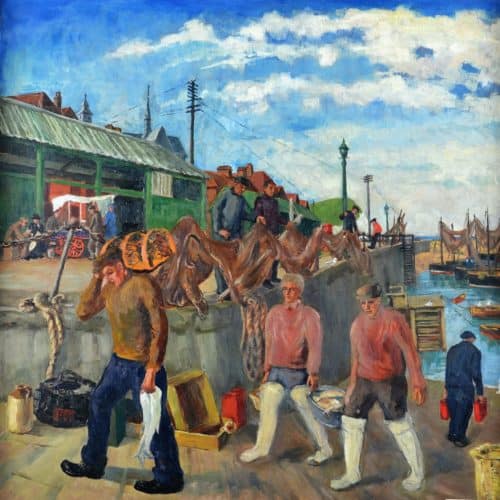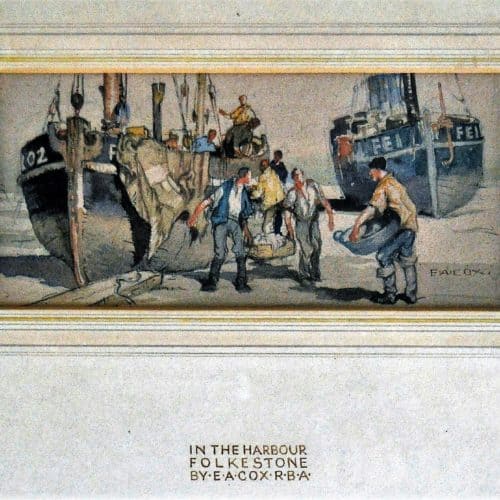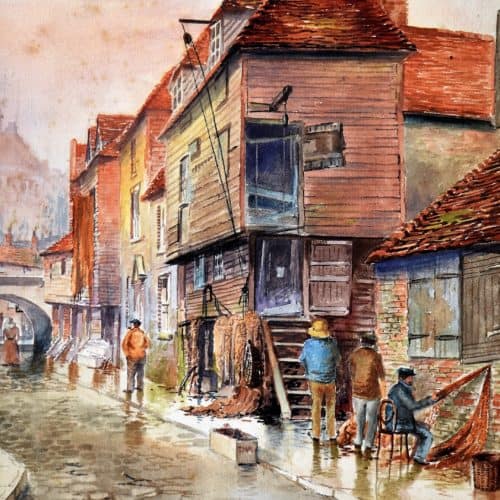Maritime 4: fishing community
These are Folkestone fishermen at the Stade, next to Folkestone Harbour in 1955. The image is of a painting called Loading the Catch.
A fishing boat has just returned and the three fishermen in the foreground are bringing the catch ashore. They have some large fish in the metal tub and at least one lobster in the lobster pot on the fisherman’s shoulder (left).
Look closely. Can you spot the following?
- Evidence of the clothes fishermen wore
- Fishermen putting out nets to dry
- Visitors buying shellfish from a cockle and winkle stall
- Fishing boats moored in the harbour
- The Fishmarket - with its corrugated roof where fish were sorted and sold
This watercolour by famous artist E A Cox shows fishing boats being unloaded in Folkestone Harbour.
It’s low tide and extremely muddy, which is why the fishermen are wearing big leather sea boots.
Did you know?
The FE prefix on the side of a boat means it’s registered in Folkestone (i.e. that Folkestone is the boat's home port).
In this 1935 oil painting by Charles Padday (1868-1954) we can see fishermen cleaning dogfish, before packing them in wooden barrels at Folkestone Fish Market.
The barrels were then sent to inland towns and cities by train.
What do you think it was like to do this job? Imagine the sounds and the smell! What would your hands and clothes have been like at the end of the day?
Fascinating fact
Salted dried dogfish steaks were a staple diet of Folkestone fishermen and were known as ‘Folkestone Beef.’ When grilled they tasted like veal chops and were eaten by the poorer classes, with relish for breakfast.
This watercolour by Xavier Willis shows the homes of Folkestone fishing families on the Stade in the early 20th century.
The houses were small and cramped (with several people often sharing a room). They had no inside toilets or running water.
Most had loft space above for storing, mending and drying fishing equipment.




